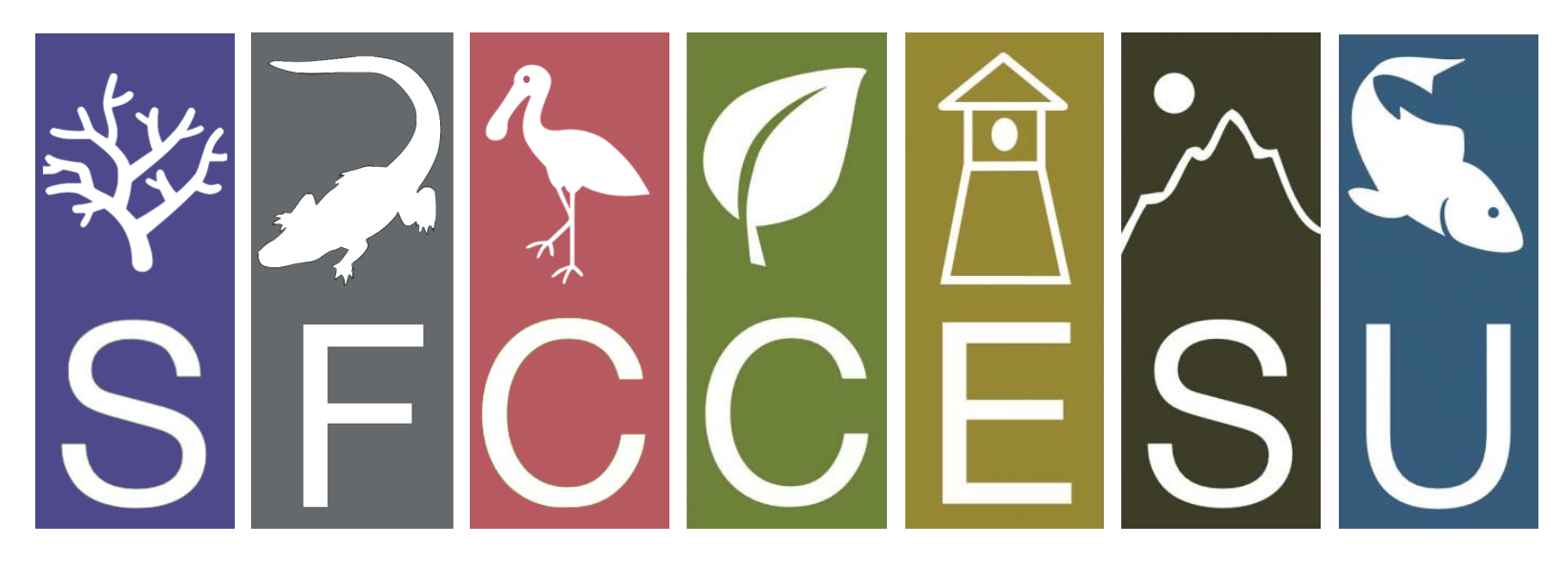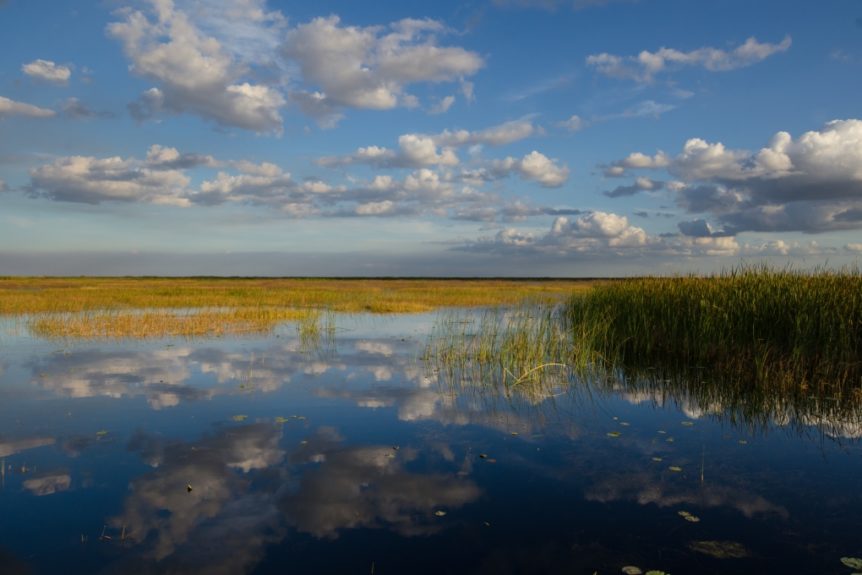REQUEST FOR STATEMENTS OF INTEREST
SOUTH FLORIDA – CARIBBEAN CESU
NUMBER W912HZ-19-SOI-0007
PROJECT TO BE INITIATED IN 2019
Project Title: Evaluating the Movement Patterns and Survival of Juvenile Everglade Snail Kites (Rostrahamus sociabilis plumbeus) at Lake Okeechobee
Responses to this Request for Statements of Interest will be used to identify potential investigators for a project to be funded by the U.S. Army Corps of Engineers (USACE) Jacksonville District to monitor Everglade Snail Kites in response to hydrological changes associated with the Lake Okeechobee Regulation Schedule in the littoral zone of Lake Okeechobee. Approximately $94,000 is expected to be available to support this project for one (1) year. Additional funding may be available for follow up work in subsequent fiscal years up to four (4) years at $94,000 per year for a total of $470,000 over five (5) years.
Background:
The Everglade Snail Kite (Rostrahamus sociabilis plumbeus) and their primary prey, apple snails (Pomacea spp.), depend on wetland habitats for all aspects of their life history. The distribution of snail kite nesting appears to fluctuate dramatically based on annual variability of specific environmental factors, such as habitat and apple snail availability, which in turn, are affected by prevailing and previous year water levels. Juvenile survival appears to be highly variable among years, and, from 2010 to present, juvenile survival has been trending down. The observed variability in juvenile survival is related to variation in environmental conditions, including those hydrologic conditions that directly affect the survival and productivity of the apple snail. This trend of lowered regional survival is a cause of concern regarding the sustainability of the population.
Lake Okeechobee is of particular importance since it serves as a critical stopover point as snail kites traverse the network of wetlands within their range. Hydrologic conditions, both natural and unnatural (i.e., water management) can affect snail kite nest success and juvenile survival both directly (e.g., increased predation) and indirectly (e.g., decreased foraging opportunities). Rapid recession rates during the breeding season and associated low water levels can allow nests to become accessible to terrestrial predators, resulting in decreased nest success. The abundance of apple snails is also linked to water regimes. Extremely low water levels and rapid recession rates can limit foraging opportunities for juvenile, and nesting adult snail kites, both of which require a sufficient forage base in relatively close proximity of the nest.
It is critical to identify the factors that negatively affect juvenile snail kite survival. Juvenile survival can have implications for the larger snail kite population and can even offset a year with a large amount of reproduction.
Brief Description of Anticipated Work:
This project should be designed to determine juvenile snail kite movement patterns, survival, and causes of juvenile mortality on Lake Okeechobee.
The objectives of the proposed research effort include:
Objective 1: To determine causes of mortality in juvenile snail kites. Assess whether typical movement behaviors can be defined for a variety of environmental conditions
Objective 2: To identify threats that are most important to juvenile snail kite survival.
Objective 3: To provide data on potential populations sinks.
Objective 4: To provide specific management recommendations for determining when and where to focus habitat management activities in order to increase population size through reduced mortality of young.
Public Benefit:
This project will play a critical role in building the knowledge base on juvenile snail kite movement and survival patterns by providing data that will fill critical information gaps and help to identify potential populations sinks, threats to fledgling survival, when and where to focus habitat management activities, and, ultimately, how to increase population size though reduced mortality of young. This information is important to the public as it relates to ecosystem health. Improvements in ecosystem health provide a direct benefit to the public by providing outdoor recreation opportunities and improved access to Lake Okeechobee for tourists and Floridians.
Vendor Requirements:
Vendor must be a non-federal partner of the South Florida-Caribbean CESU Unit willing to accept the negotiated CESU indirect cost rate of 17.5%. Successful applicants should have expert knowledge of Lake Okeechobee and the Greater Everglades ecosystem and a record that demonstrates research experience with monitoring threatened and endangered avian species, specifically the Everglade Snail Kite, using telemetry-based tags (radio, satellite, or cell). The candidates will be required to work with (or under) an appropriate 10(a)(1)(A) permit. The candidates will be required to prepare a Statement of Work and Work Plan regarding the research to be conducted. The candidates will also be required to submit four (4) quarterly status reports and one (1) annual report each year of the contract to provide updates on monitoring, data collection and analyses, and assessments regarding the impacts of Lake Okeechobee water management operations on the survival of juvenile snail kites.
Government Participation:
The USACE will participate in study site selections, design, and work plan development. USACE will participate in field data collection efforts as appropriate, will review quarterly status reports, and will provide input to data interpretation for final reports. USACE will assist in the dissemination of study results through local scientific presentations and website postings. USACE will incorporate the data and analysis into a system-wide database that assesses and evaluates ecosystem restoration efforts in central and southern Florida. Scientific and technical information generated from the project will be utilized to evaluate project performance and system responses and to produce assessment reports describing and interpreting the responses.
Materials Requested for Statement of Interest/Qualifications:
Please provide the following via e-mail attachment to: Melissa.A.Keen@usace.army.mil
(Maximum length: 2 pages, single-spaced 12 pt. font).
- Name, Organization and Contact Information
- Brief Statement of Qualifications (including):
- Biographical Sketch,
- Relevant past projects and clients with brief descriptions of these projects,
- Staff, faculty or students available to work on this project and their areas of expertise,
- A description of capabilities to successfully complete the project you may wish to add (e.g. equipment, laboratory facilities, field facilities, etc.).
Note: A proposed budget is NOT requested at this time.
Review of Statements Received: Based on a review of the Statements of Interest received, an investigator or investigators will be invited to prepare a full study proposal. Statements will be evaluated based on the investigator’s specific experience and capabilities in areas related to the study requirements. Additionally, the evaluation method and selection criteria for research and development awards must be: (1) The Technical merits of the proposed research and development; and (2) Potential relationship of the proposed research and development to the Department of Defense missions.
Please send responses or direct questions to:
Melissa Keen
U.S. Army Engineer Research and Development Center (ERDC)
ERDC Contracting Office (ECO)
3909 Halls Ferry Road
Vicksburg, MS 39180
Timeline for Review of Statements of Interest: Review of Statements of Interest will begin after the Request for Statements of Interest has been posted on the CESU website for 10 working days.

